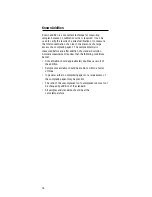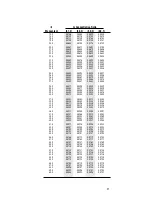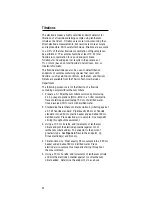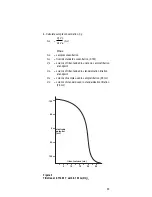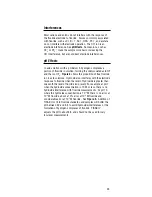
Fluoride in Acid Solutions
In solutions with a pH below 5, hydrogen ion complexes a
portion of the fluoride ion, forming HF or HF
2
-
which cannot be
detected by the electrode. To free the complexed fluoride, the pH
of the solution must be adjusted into the weakly acidic to weakly
basic region before making the determination. A strong base,
such as sodium hydroxide should not be used for pH
adjustment, since the total ionic strength of the adjusted
samples and standards will vary according to the original
solution pH and the amount added from sample to sample will
vary. (Variations in total ionic strength affect the accuracy of
concentration measurements.) Dilution of samples and
standards with a large excess of sodium acetate, on the other
hand, buffers the pH to above 5 and help adjust the total ionic
strength of samples and standards to the same level.
Procedure
1. Prepare 15% sodium acetate. Dissolve reagent grade
sodium acetate (CH
3
COONa) in distilled water. Prepare
in sufficiently large quantities to dilute all samples
and standards.
2. Prepare a background solution containing all components
except fluoride. Use this solution to prepare standards.
3. Prepare standards in the concentration range of the
unknowns by adding fluoride to the background solutions
Dilute each standard 10:1 with sodium acetate solution
(9 parts sodium acetate and 1 part standard). Prepare fresh
standards every two weeks if standard contains less than
10 ppm fluoride. If a direct concentration readout specific
ion meter is used, at least two standards are needed. It a
pH/mV meter is used, a calibration curve should be drawn
and at least three standards should be prepared.
4. Calibrate the electrode(s) following the instructions in
Checking Electrode Operation (Slope).
5. Measure unknowns: Dilute each unknown 10:1 with sodium
acetate before performing the determination (9 parts sodium
acetate and 1 part unknown).
NOTE:
In many cases, standards need not to be prepared
from background solutions. If a standard prepared from
the background solution gives the same reading (after
dilution with sodium acetate) as a standard prepared from
pure sodium fluoride, then the use of the background
solution is unnecessary.
24
Summary of Contents for 96-09
Page 7: ...4 ...







